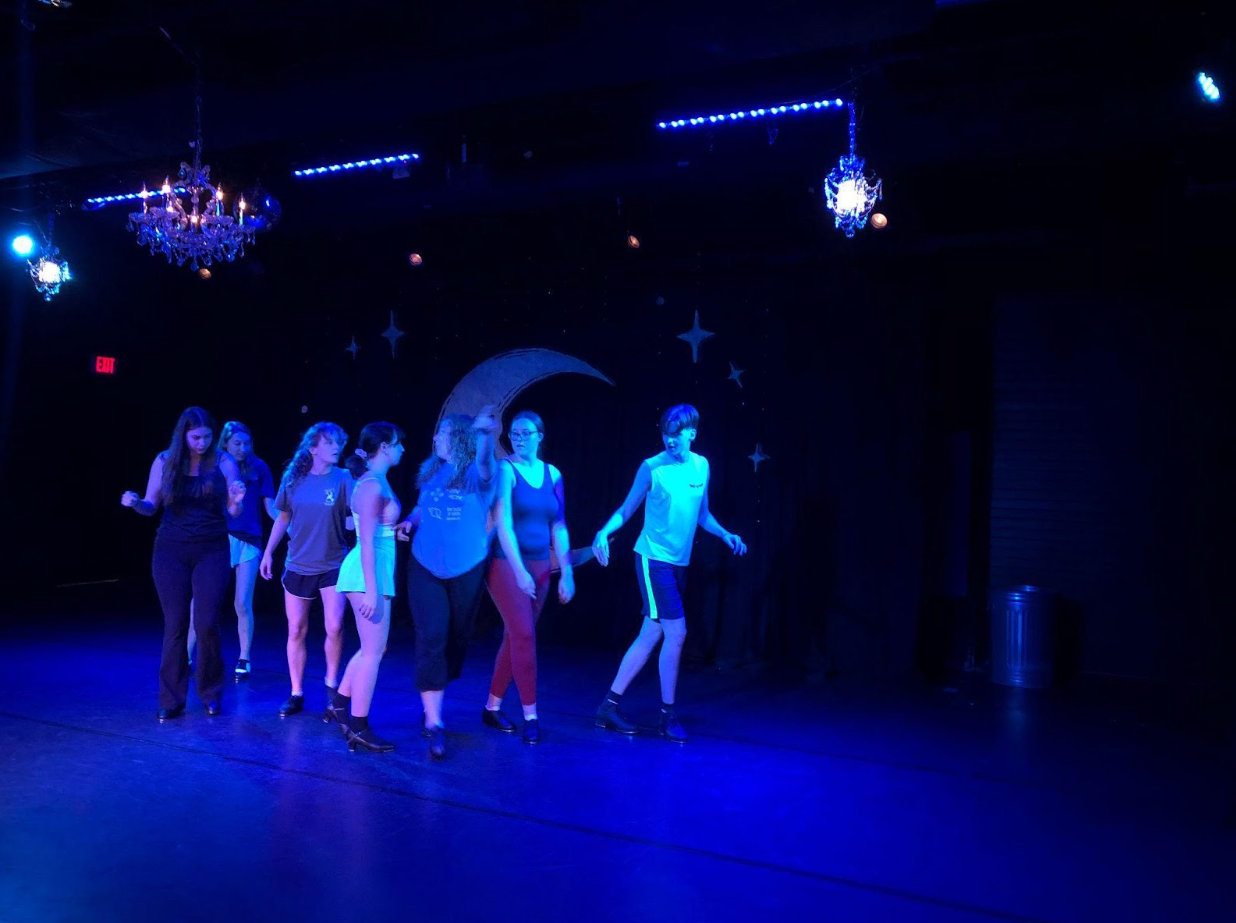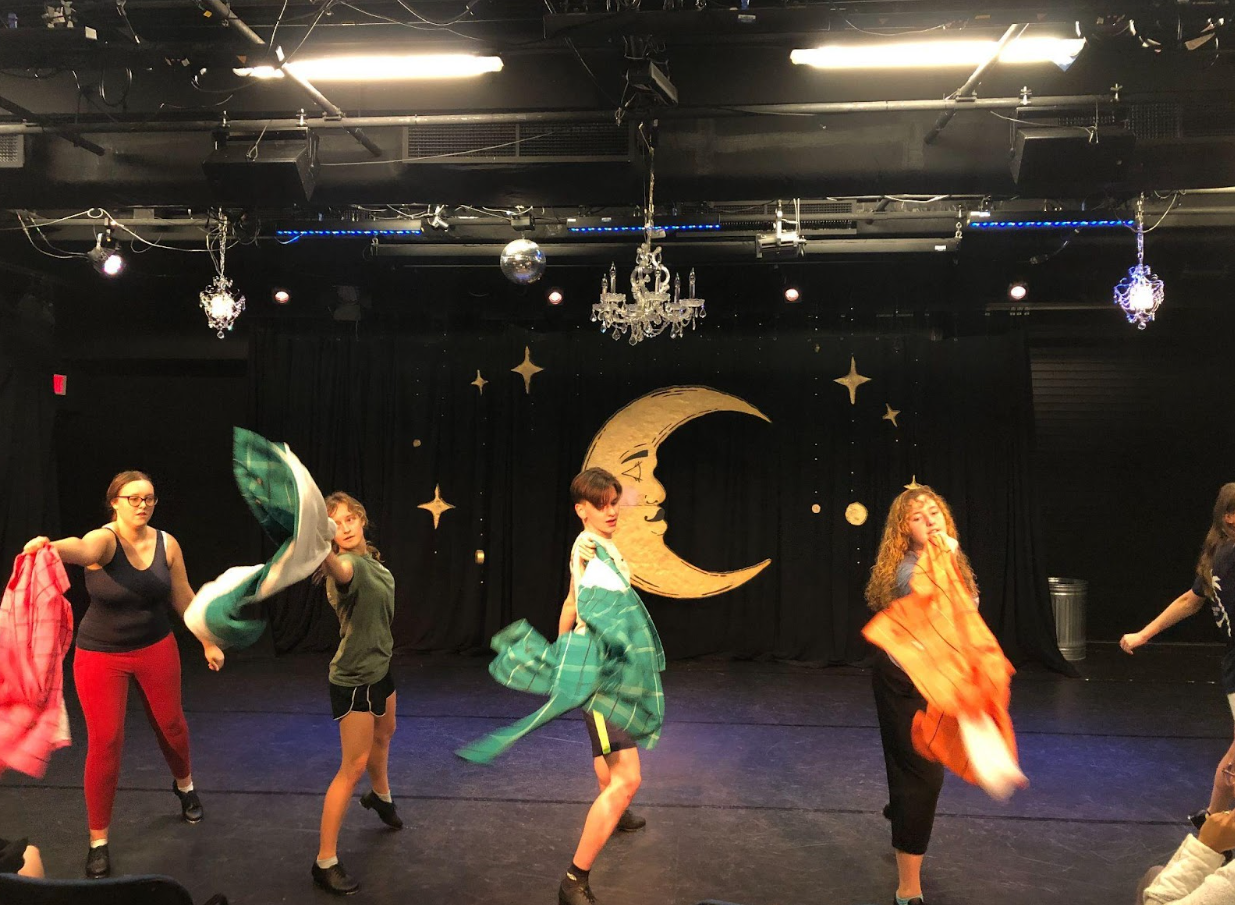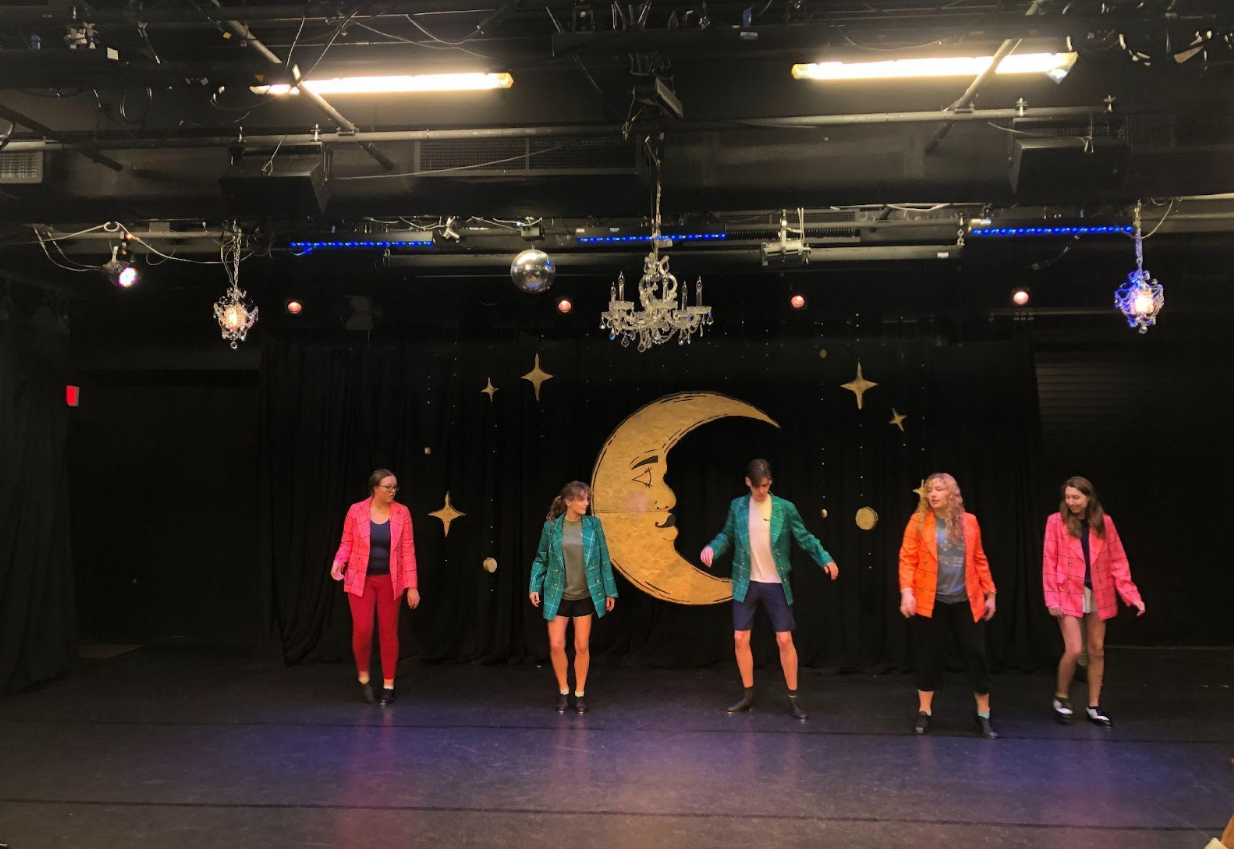Performers and crew rushed around in the Black Box Theater (BBT), scrambling to get into position or to cue lights to shine on a dark stage. Jazz music played in the background, providing a melody to the intimate space. As the lights came up, dancers spun, throwing their jackets into the air. The sound of a train rushing by blew through the theater, and lighting changed from dark and brooding to bright and alive.
The Catalyst spoke with performers and Technical Theater Production students at this Nov. 8 rehearsal and got a glittering preview of what is to come. In this space of energy and movement, Dance on Campus will breathe light into the Black Box Theater (BBT) for their third ever performance.
Dance on Campus is performing their newest show on Nov. 16, 17 and 18 at 7:30 p.m., and later over the weekend on Nov. 18 and 19 at 3 p.m. The performance will be held in the BBT, located inside the Hamilton “Ham” Center. In the past, the crew organized four performances, which have now increased to five. According to Director of Theatrical Production Tim O’ Donnell, who teaches the Technical Theater Production course involved in the show, the reason for the additional day is due to demand and limited seating in the theater, which holds only 33 people.
“We used to do four shows and we found that they would sell out immediately, so we added the fifth show, and actually the fifth show isn’t going to be enough anymore. The Black Box is so intimate and so small … we’re starting to burst at the seams,” O’Donnell said. “For next academic year there is discussion of [performing] two weekends.”
O’Donnell told the Catalyst that the performance will emulate the experience of being in a jazz club. “We have cabaret tables, people will be sitting on stage. We want to give people that kind of feel.”
The show will be accompanied by live music by thesis student and alto saxophone player Sabine Wittmann and third-year trumpet player Angel Medrano-Beruman. Wittmann and Medrano-Beruman will play between sets, and as O’Donnell described the goal, “give it an authentic club setting.”
O’Donnell explained that the experience of being an audience member for this performance is different, and more interactive than one might expect.
“This is the kind of show where you should be active, you should be vocal. You should be participating, whatever that means to you. I’m not telling you to get up and dance and get on the floor, but you’re not just watching a plot,” he said.
Students involved in the show come from one of three classes: Jazz Dance, Intermediate Tap and Technical Theater Production, which is running the technical aspects. The dancers have been learning classical and contemporary jazz, Broadway and modern tap and house fusion from different choreographers based in Sarasota. Their performance is based on these styles of dance, with each of the two classes incorporating different aspects.
“If somebody comes and takes a dance class they’re probably [thinking], ‘Oh, it’s just a dance class.’ But having the performance component allows them to get to experience what we have to offer here at New College as far as the performance element and all that it takes to put a show together,” O’Donnell explained.
According to O’Donnell, during the first iteration of Dance on Campus he “couldn’t see up from down,” and was still figuring things out. For the second year, they had to perform outside due to the COVID-19 pandemic.
“What’s been really exciting about this one is that this show is fulfilling the vision that we had for Dance on Campus. … The first two had so many obstacles between new people and COVID-19, that, like, third time’s the charm,” he said.
Dance Instructor and artist in residence Leymis Bolaños Wilmott, who has been teaching for more than 18 years at New College, is offering the two dance classes, and brought in multiple choreographers to instruct the students.
“What’s so beautiful about the show is that … when do you ever get to work with more than one choreographer? It’s so rare. But the students in the tap piece have gotten to work with three different artists, and two of them are professional artists working in the community, which is really great,” Bolaños Wilmott told the Catalyst.
Bolaños Wilmott emphasized how each show is different, and that it’s important that these opportunities are available to students.
“It’s just fun, and with everything that’s happening in the world, it’s just really nice to be able to put on a show that’s full of celebrating all the hard work the students are doing, and all the dance classes that are being offered on campus. And all of it is student-led. … This is really a student inspired show,” she said.
Students have been practicing every day of the week in preparation for the performance, and according to thesis students Emy McGuire and Michael Bolesh, it’s been “so much work.”
“It was a decision that I made when I was like, ‘Oh it’s my last semester, I should do everything.’ I was so young and stupid,” McGuire said. “We’re going to go from [wearing] tap shoes to jazz shoes, to tap shoes to jazz shoes to tennis shoes.”
“Then to not wearing any shoes for the rest of the night because my feet will hurt so much,” Bolesh interjected.
McGuire and Bolesh told the Catalyst that they’re looking forward to the performance, and that it’s been a fun class.
“My major has nothing to do with this at all, so this is like escapist for me. I get up and dance, because if I got up at nine and started working on my thesis… ,” Bolesh said with a laugh.
Students from the Technical Theater Production class have also been hard at work since the beginning of the semester building the set, wiring lights and creating the costumes. First-year Esperanza Paulino and second-year Sarah York said that they’ve enjoyed working on the show, and that laying down the Marley flooring for the dancers was one of the more difficult yet entertaining things they’ve done.
“You have to be barefoot, you can’t wear shoes on it, so you have people rolling around on the floor,” York said.
“There was one point where people were rolling and other people were jumping over them,” Paulino added.
O’Donnell said he is excited about how this performance has come together into something bigger than just a recital, embodying the initial dream of what Dance on Campus really is.
“We want the audience to come in and have some type of experience, instead of just watching a dance recital. We are trying to provide a dance theatrical experience. This is what we would call a dance concert, as opposed to a dance recital. And it really has become that,” O Donnell said.



